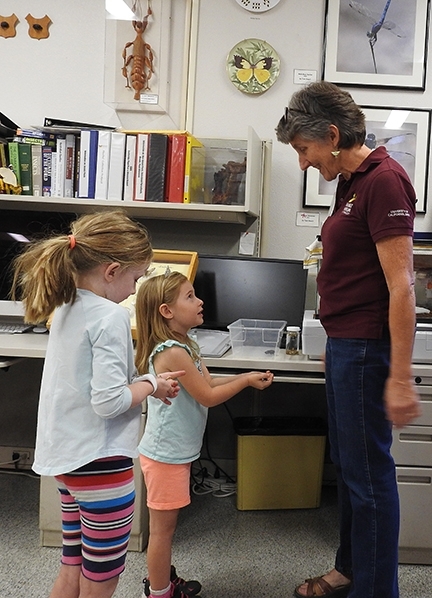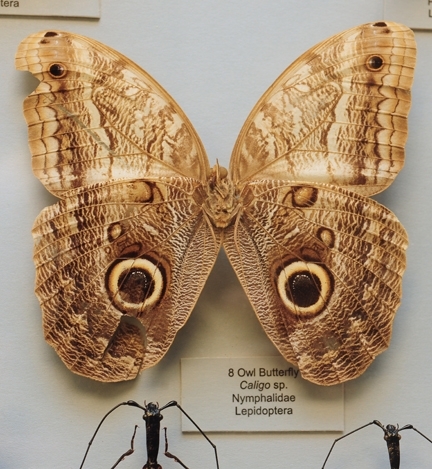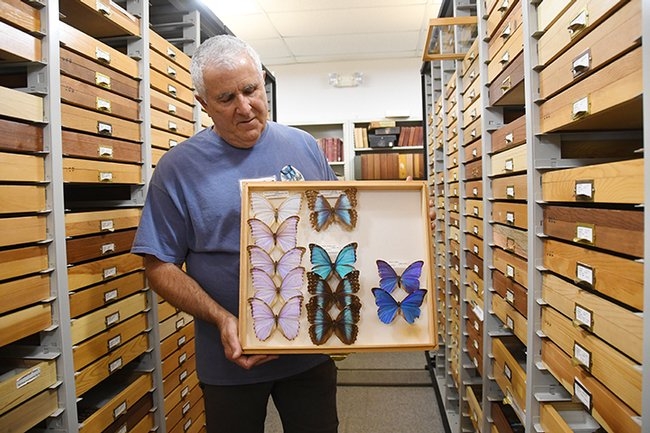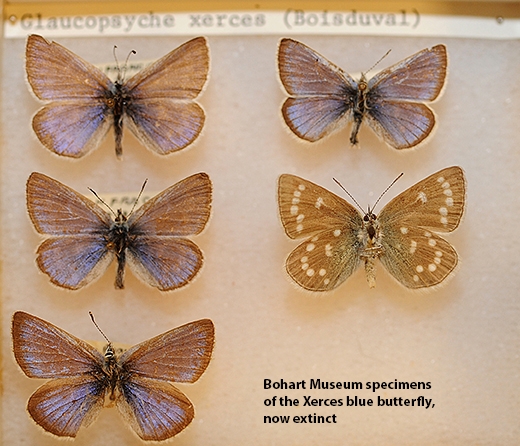
As you may remember, over the last nine years, this event was a single day, the Saturday of Presidents' Day weekend when friends, families and future scientists eagerly gathered on campus to see museums and collections and confer with the scientists. This year, due to the COVID-19 pandemic, it's a entire month of Zoom and YouTube presentations and other online activities.
It's free, and has always been free. The organizers want to keep it that way.
Now they need your help. Through the UC Davis crowdsourcing program, which ends Feb. 28, they are asking for donations to keep this science-based event alive and thriving. Please click here to donate.
The Biodiversity Museum Month features 12 UC Davis museums and collections:
- Anthropology Museum
- Arboretum and Public Garden
- Bohart Museum of Entomology
- Botanical Conservatory
- California Raptor Center
- Center for Plant Diversity
- Häagen-Dazs Honey Bee Haven
- Nematode Collection
- Marine Invertebrate Collection
- Museum of Wildlife and Fish Biology
- Paleontology Collection
- Phaff Yeast Culture Collection
- Viticulture and Enology Collection (not participating this year but they have in the past)
Using their science communication skills, the volunteers have created dozens of videos and associated educational activities. See the schedule for live talks and demonstrations and pre-recorded talks and activities. "The goal of these educational resources is to reach new audiences and to connect people from all walks of life to science and the biodiversity surrounding them," said event coordinator Tabatha Yang, who is the Bohart Museum's education and outreach coordinator.

Take, for example, the Bohart Museum, temporarily closed but located in Room 1124 of the Academic Surge Building on Crocker Lane. It's the home of nearly eight million insect specimens, plus a live "petting zoo" (think Madagascar hissing cockroaches, stick insects and tarantulas) and a year-around, online gift shop stocked with such insect-themed items as t-shirts, jewelry, posters and books.
The Bohart Museum is all about "understanding, documenting and communicating terrestrial arthropod diversity." Access its website at http://bohart.ucdavis.edu/ and you'll find insect/arthropod fact sheets, and information on how to collect insects, special collections, and the tardigrade (water bear) collections and much more. A landmark water bear sculpture, the work of artist Solomon Basshoff, now graces the entrance to the Bohart.
The Bohart collections draw huge, inquisitive crowds during the open houses, and rightfully so. Specimens include the Xerces blue butterfly, Glaucopsyche xerces, now extinct.
"Think about collections this way--they are snapshots in time and spaces," says Professor Lynn Kimsey, director of the Bohart Museum and a former chair of the UC Davis Department of Entomology and Nematology. "They tell you where the environment has been and where it's going. A way to visualize change over time."
Well said. Now let's ensure that the UC Davis Biodiversity Museum program stays alive, thrives and remains free to the public. To donate, just access by Feb. 28 this site: https://crowdfund.ucdavis.edu/project/24310
Attached Images:

